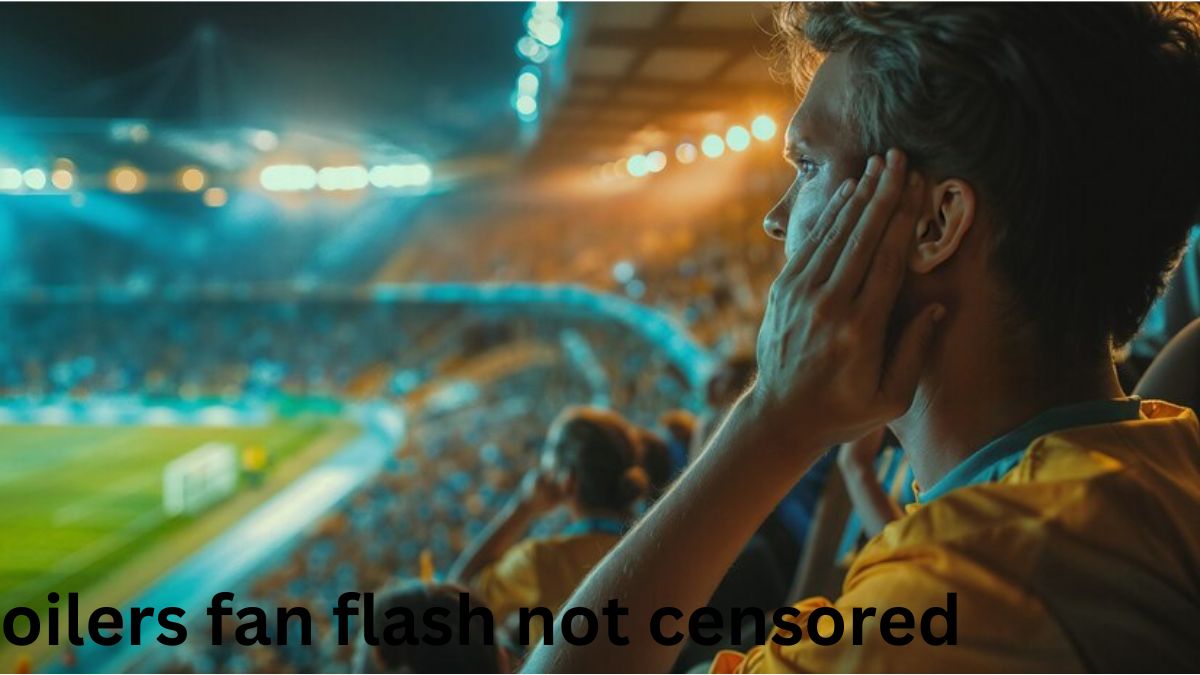The world of sports is often associated with intense emotions , passionate fans, and, at times, unexpected moments that capture widespread attention. However, few could have predicted the recent incident that has become known as the “oilers fan flash not censored” controversy. This incident, which occurred during a hockey game involving the Edmonton Oilers, has sparked debates about censorship, fan behavior, and media responsibility. But what exactly happened, and why does it matter? Let’s dive into the details.
What Exactly Happened?
During a live broadcast of an Edmonton Oilers game, a female fan in the stands unexpectedly lifted her shirt, exposing herself to the camera. The incident occurred quickly, but because the broadcast was live, the moment was not censored before being aired. The image spread rapidly across social media, leading to widespread discussion and controversy.
The Role of Live Broadcasting
One of the key issues in this incident revolves around the nature of live broadcasting. Sports games, especially those in the NHL, are often broadcast live to capture the excitement of the moment. However, this also means that there is little to no delay, and incidents like this one can occur without the chance for networks to censor them in real-time.
The Fan’s Perspective
For the fan involved, the decision to flash the camera might have seemed like a fun, impulsive act. In the moment, it’s possible that she did not fully consider the potential repercussions of her actions. However, with the world watching, what might have been intended as a joke quickly turned into a viral moment that attracted both positive and negative attention.
The Public Reaction
As the video of the incident spread across the internet, reactions varied widely. Some people found the moment humorous and dismissed it as a harmless prank. Others, however, were shocked and felt that the incident was inappropriate for a public broadcast, especially one that could be viewed by children and families. The debate about what is considered acceptable behavior in a public setting became a hot topic, with opinions divided across social media platforms.
Media Responsibility and Censorship
The incident also raised important questions about the responsibility of media outlets in censoring or not censoring such content. The fact that the flash was not censored in real-time brought attention to the limitations of live broadcasting. Should networks implement a slight delay in their broadcasts to allow for the censorship of unexpected moments like this? Or should viewers accept that live television comes with the risk of witnessing unscripted, and sometimes inappropriate, behavior?
The Role of Social Media
In the digital age, moments like the “Oilers Fan Flash” incident can spread like wildfire. Social media platforms such as Twitter, Instagram, and Facebook played a significant role in amplifying the event. The video clip was shared, retweeted, and commented on by thousands of users, quickly turning it into a viral sensation.
Legal Implications
oilers fan flash not censored Beyond the public and media reaction, there are also potential legal implications to consider.
Impact on the NHL and the Edmonton Oilers
The incident also had ramifications for the NHL and the Edmonton Oilers as an organization. The league and the team may need to consider how to prevent similar incidents in the future. This could involve stricter security measures at games, closer monitoring of fan behavior, or even changes to broadcasting policies. The league’s reputation and the image of the Oilers could be affected, depending on how they handle the fallout from the incident.
Public vs. Private Behavior
This incident also highlights the ongoing tension between public and private behavior. In a packed stadium, what might feel like a private moment is actually very much in the public eye. This can be especially true when cameras are rolling. The “Oilers Fan Flash” moment serves as a reminder that actions taken in public spaces, especially during live broadcasts, can have far-reaching consequences.
Lessons Learned
So, what can we take away from this incident?
Conclusion
The “Oilers Fan Flash Not Censored” controversy is a reminder of the unpredictable nature of live sports broadcasts and the potential for unexpected moments to capture widespread attention. While opinions on the incident vary, it has undoubtedly sparked important discussions about media responsibility, fan behavior, and the role of social media in shaping public discourse. As we move forward, it will be interesting to see how the NHL, media outlets, and social platforms respond to such incidents to balance entertainment with responsibility.
FAQs
3. Could this lead to changes in live broadcasting policies?
- It’s possible. Incidents like this could lead networks to consider implementing delays in live broadcasts to prevent similar situations.
4. How has the public reacted?
- Public reaction has been mixed, with some finding humor in the situation and others expressing concern over the appropriateness of the incident during a live broadcast.
5. What can be done to prevent future incidents?
- Increased security measures at events, better monitoring of fan behavior, and potential changes to broadcasting policies are all possible steps that could be taken to prevent similar incidents.
